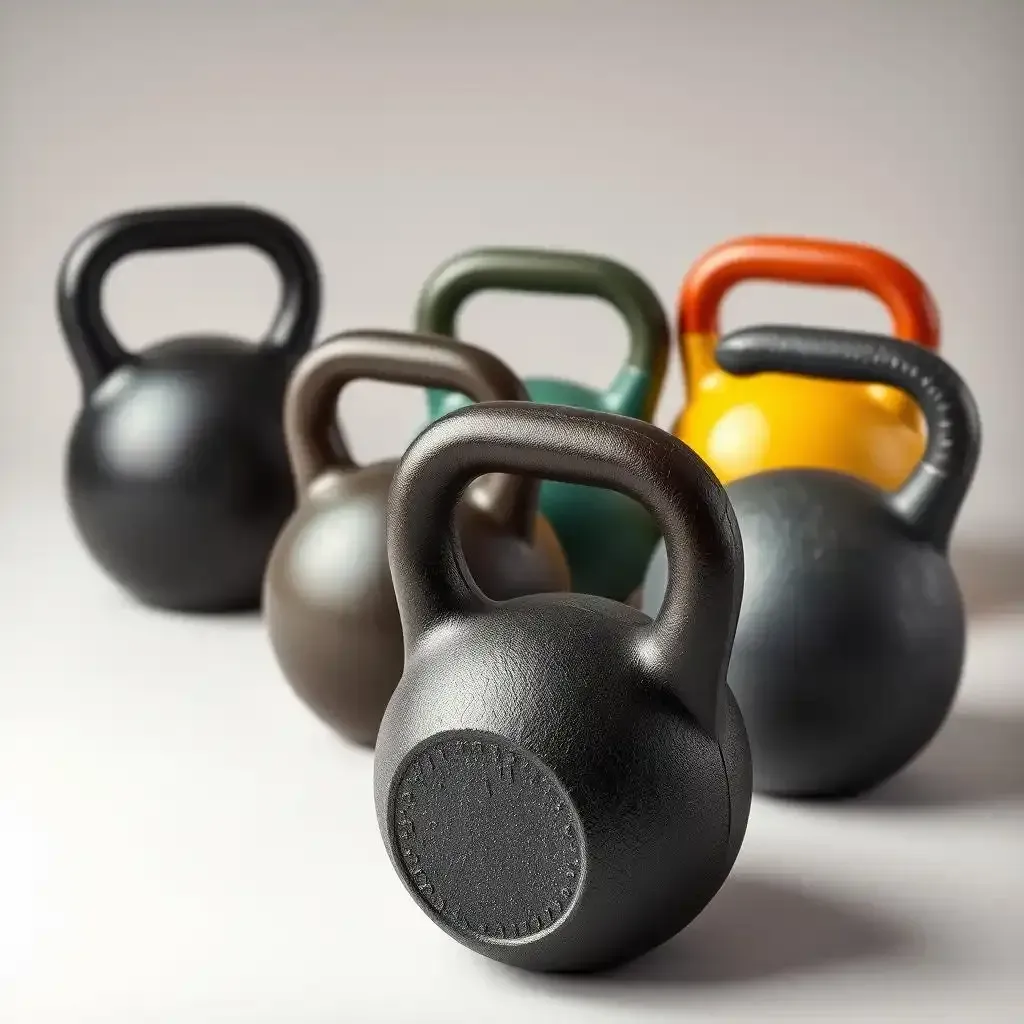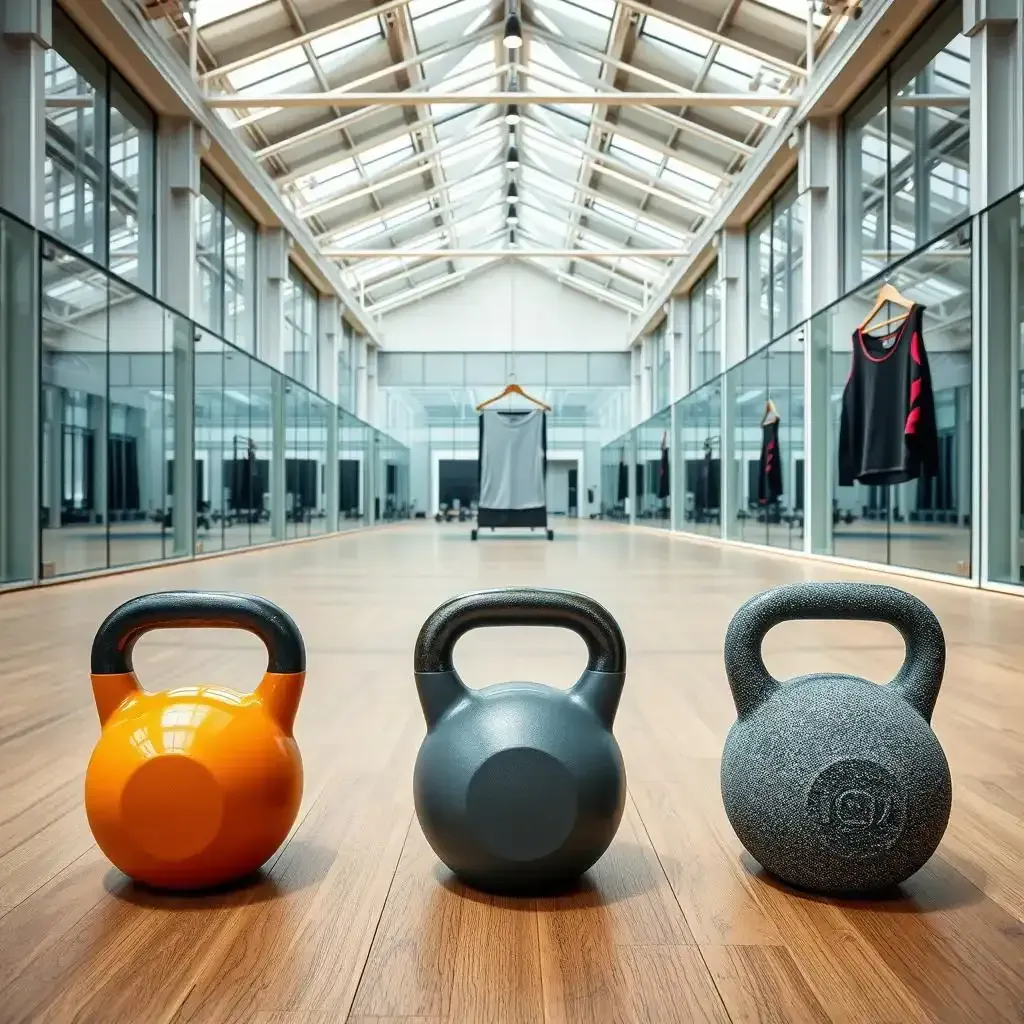Table of Contents
So, you're thinking about getting into kettlebell workouts? Awesome! But before you grab the first shiny kettlebell you see, let's talk about something super important: the material. Choosing the right kettlebell material isn’t just about aesthetics; it directly impacts your workout experience, from comfort and grip to durability and longevity. At kettlebellworkout.homes, we believe in empowering you with knowledge, so you can make informed decisions. This article will investigate into the world of kettlebell materials, helping you understand the pros and cons of each, so you can choose the perfect kettlebell for your fitness progression. We'll cover everything from the classic cast iron kettlebells to newer materials like rubber-coated and vinyl-coated options. We'll even touch on some of the more unusual materials you might find. Get ready to become a kettlebell material expert! Let's get started!
Choosing the Right Kettlebell Materials: A Guide to Durability and Performance
When it comes to kettlebell materials, the choices can be overwhelming. But don't worry, I've got you covered. Each material has its own set of pros and cons, and knowing what to look for can make a huge difference in your workouts. Let’s explore into the nitty-gritty and help you find the perfect kettlebell for your needs.
First up, let's talk about cast iron. This is the classic choice for kettlebells, and for good reason. Cast iron is incredibly durable and can handle the abuse of intense workouts. Whether you’re swinging, pressing, or cleaning, cast iron kettlebells will stand the test of time. Plus, they have a grippy surface that helps with control, especially when you’re sweating.
Material | Pros | Cons |
|---|---|---|
Cast Iron | Durable, grippy surface, classic feel | Heavy, can damage floors if dropped |
However, cast iron isn’t without its downsides. These kettlebells can be heavy and, if you drop them, they can damage your floors. That's where coated kettlebells come in. Vinyl-coated kettlebells, for example, have a smooth and comfortable surface that protects your floors and hands. They’re also a bit easier on the eyes, with a sleek finish that looks great in any home gym. Check out our to see how they fit into your routine.
Another popular option is rubber-coated kettlebells. These have a soft, cushioned feel that’s perfect for high-intensity workouts. The rubber coating provides a comfortable grip and protects your floors from dings and scratches. Just keep in mind that rubber can wear down over time, so you might need to replace these kettlebells more frequently than cast iron ones.
- Cast Iron: Durable, grippy
- Vinyl-Coated: Smooth, protects floors
- Rubber-Coated: Soft, comfortable grip
For those who prefer a more modern look, powder-coated kettlebells are a great choice. The powder coating is durable and chip-resistant, making it a long-lasting option. Plus, it comes in a variety of colors, so you can match your kettlebells to your workout gear. If you’re a beginner, you might want to consider neoprene kettlebells. These are soft and lightweight, making them ideal for those just starting out.
Lastly, if you’re on the go or have limited space, adjustable kettlebells made from plastic and foam are a fantastic option. These kettlebells can be adjusted to different weights, saving you the hassle of buying multiple bells. They’re also lightweight and portable, perfect for travel or small apartments. For more tips on choosing the right kettlebell weight, check out our .
Kettlebell Materials: Cast Iron – The Classic Choice and Its Variations

Kettlebell Materials Cast Iron The Classic Choice And Its Variations
Why Cast Iron Kettlebells Are a Timeless Favorite
When it comes to kettlebell materials, cast iron is like the classic jeans of the fitness world. It’s durable, versatile, and can handle just about anything you throw at it. Whether you’re a seasoned pro or a beginner, cast iron kettlebells are a solid choice. They’re designed to withstand the rigors of intense workouts, making them perfect for high-rep exercises and heavy lifts.
One of the best things about cast iron kettlebells is their grippy surface. This helps you maintain control, even when your hands are sweaty. Imagine trying to hold on to a slippery barbell during a deadlift; it’s the same principle. The texture of the cast iron gives you that extra grip, making your workouts safer and more effective. Check out our to see how cast iron can enhance your routine.
Material | Pros | Cons |
|---|---|---|
Cast Iron | Durable, grippy surface, classic feel | Heavy, can damage floors if dropped |
Cast Iron Variations: From Basic to Premium
Not all cast iron kettlebells are created equal. Some come with additional features that can make them even more appealing. For example, many cast iron kettlebells have smooth, polished surfaces that reduce the risk of calluses and blisters. Others have ergonomic handles that provide a more comfortable grip, which is especially useful for longer workouts.
Another variation is the cast iron kettlebell with a painted finish. These kettlebells not only look great but also offer a smoother surface. The paint can help prevent rust and corrosion, making the kettlebell more durable over time. If you’re looking for a kettlebell that combines classic durability with modern aesthetics, a painted cast iron kettlebell might be the way to go. For more tips on choosing the right kettlebell, check out our .
- Painted Finish: Smooth, rust-resistant
- Ergonomic Handles: Comfortable grip
- Polished Surface: Reduces calluses and blisters
Exploring Alternative Kettlebell Materials: Beyond Cast Iron

Exploring Alternative Kettlebell Materials Beyond Cast Iron
Now that we’ve covered the classic cast iron kettlebells, let’s examine into some alternative materials. These options can offer unique benefits and might just be the perfect fit for your workout routine. For instance, vinyl-coated kettlebells are a popular choice for those who want a smoother, more comfortable grip. These kettlebells are often cheaper than their bare cast iron counterparts and can protect your floors from damage.
Rubber-coated kettlebells are another great option. They provide a soft, cushioned feel that’s perfect for high-intensity workouts. The rubber coating not only gives you a comfortable grip but also protects your floors from dings and scratches. Just keep in mind that rubber can wear down over time, so you might need to replace these kettlebells more frequently.
- Vinyl-Coated: Smooth, comfortable grip
- Rubber-Coated: Soft, cushioned, floor protection
For those who prefer a more modern look, powder-coated kettlebells are a fantastic choice. The powder coating is durable and chip-resistant, making it perfect for long-term use. Plus, they come in a variety of colors, so you can match your kettlebells to your workout gear. If you’re a beginner, consider neoprene kettlebells. These are soft and lightweight, making them ideal for getting started without the risk of injury.
Lastly, if you’re on the go or have limited space, adjustable kettlebells made from plastic and foam are a great option. These kettlebells can be adjusted to different weights, saving you the hassle of buying multiple bells. They’re also lightweight and portable, perfect for travel or small apartments. For more tips on choosing the right kettlebell weight, check out our .
Material | Pros | Cons |
|---|---|---|
Vinyl-Coated | Smooth, comfortable grip, protects floors | Less durable, can crack over time |
Rubber-Coated | Soft, cushioned, protects floors | Can wear down, needs more frequent replacement |
Powder-Coated | Durable, chip-resistant, variety of colors | Can be more expensive |
Neoprene | Soft, lightweight, comfortable | Less durable, can lose shape |
Plastic and Foam | Lightweight, portable, adjustable | Less durable, limited weight range |
The Impact of Kettlebell Materials on Your Workout: Comfort, Grip, and More

The Impact Of Kettlebell Materials On Your Workout Comfort Grip And More
How Material Affects Your Grip
The material of your kettlebell can make or break your workout. Think of it like choosing the right pair of shoes for running. If your shoes are uncomfortable, you’ll be distracted and might even get blisters. The same goes for kettlebells. A smooth, comfy grip can mean the difference between a solid workout and a painful one.
For example, a cast iron kettlebell has a grippy surface that’s perfect for when you’re sweating. It helps you maintain control, even during intense exercises. But if you’re new to kettlebells, a vinyl-coated or rubber-coated kettlebell might be better. These materials are softer and more forgiving, reducing the risk of blisters and calluses. Check out our to get started on the right foot.
Material | Pros | Cons |
|---|---|---|
Cast Iron | Durable, grippy surface | Can be rough on hands |
Vinyl-Coated | Smooth, comfortable grip | Less durable, can crack |
Rubber-Coated | Soft, cushioned, protects floors | Can wear down over time |
The Role of Material in Comfort and Performance
Comfort is key when you’re working out. Imagine holding a heavy, uncoated kettlebell for an extended period. Your hands might start to hurt, and you’ll be more likely to drop it. This is where materials like neoprene and rubber come in handy. They offer a soft, cushioned grip that’s easy on your hands.
Neoprene kettlebells are especially great for beginners. They’re lightweight and gentle, making them perfect for those just starting out. Plus, they’re less likely to damage your floors if you drop them. If you’re looking for more intense workouts, consider powder-coated or military-grade e-coated kettlebells. These materials are durable and can handle the abuse of high-intensity training. For more tips on choosing the right kettlebell, check out our .
- Neoprene: Soft, lightweight
- Rubber: Cushioned, protects floors
- Powder-Coated: Durable, chip-resistant
- Vinyl-Coated: Smooth, comfortable
Final Thought
Ultimately, the best kettlebell material for you depends on your individual needs and preferences. Consider your workout style, budget, and personal comfort levels when making your decision. Whether you opt for the classic feel of cast iron, the protective coating of vinyl, or the softer grip of rubber, remember that the right kettlebell material can significantly enhance your workout experience and help you achieve your fitness goals. Happy lifting!